A European powerhouse economically, culturally and technologically, Germany is home to mysterious forests, picturesque castles, romantic valleys and some of the world’s best beer. From world-class red and white wines to popular liqueurs drank worldwide, German drinks are as varied and as unique as the landscape.
Whether you prefer a sophisticated Hugo, a hearty shot of Jägermeister or a fine Riesling, Germany’s drinks slide down easily. So pack your favourite stein and prepare to say ‘prost’ all day long as you explore the taverns, beer gardens and wine regions of Germany.
Contents
20 German Drinks
Top Tours
- German Munich An evening of Bavarian beer and food culture
- German Berlin Pub Crawl with skip-the-line entry
- German Munich Beer Brewing Course
German Alcoholic Drinks
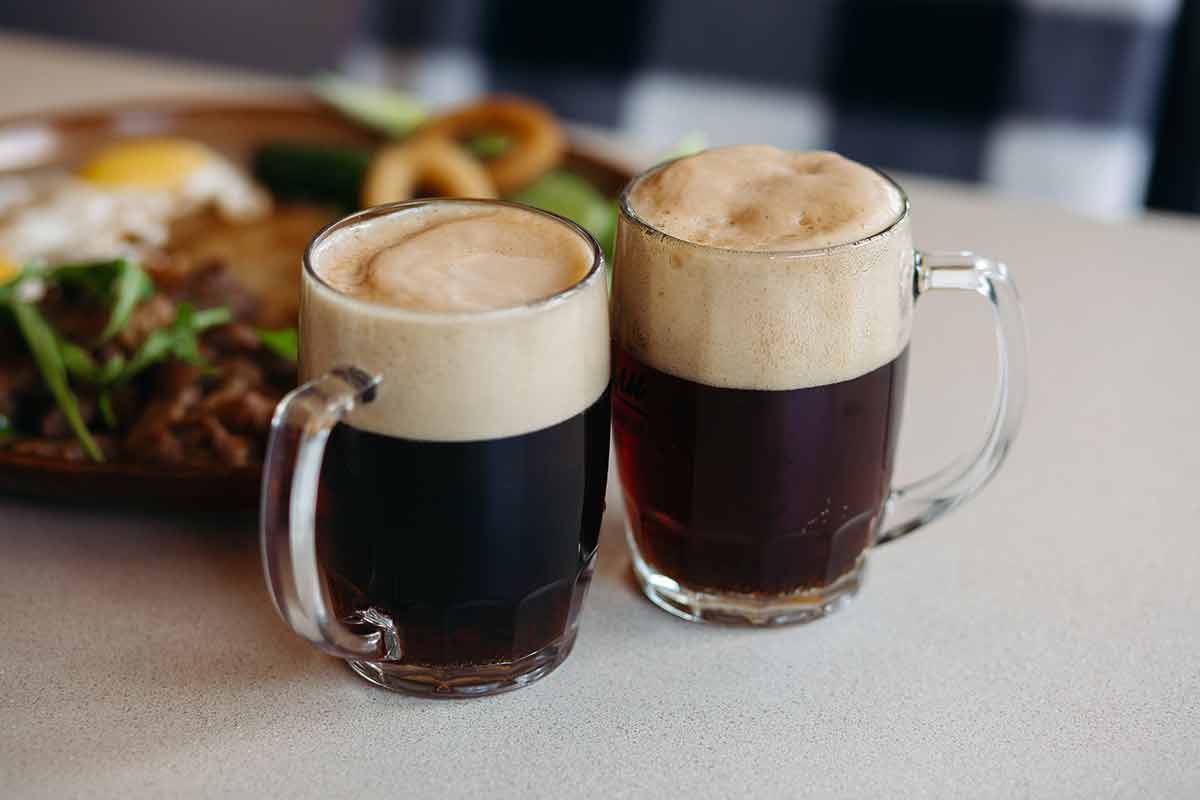
1- Jägermeister
Jägermeister is undoubtedly Germany’s most popular alcoholic beverage after beer.
This herbal liqueur is as complex as it is delicious, comprising 56 different herbs that many believe give Jägermeister medicinal properties.
This digestif was created in 1934.
Although the recipe remains as secretive as ever, you might taste hints of saffron, ginger, citrus and liquorice among the drink’s unique flavours.
Regularly used as a mixer in various other popular cocktails, Jägermeister is perfectly enjoyable on its own and is best-served ice cold.
2- Himbeergeist
Himbeergeist is a popular spirit made from raspberries and is mostly produced in Germany and France’s Alsace region.
The spirit-soaked wild raspberries give Himbeergeist a distinctly mint and basil undertone and, bottled at around 40% alcohol by volume, provide quite the kick to the senses.
While Himbeergeist is fine to drink neat, it’s also often poured over raspberry sorbet and topped with mint as a dessert.
3- Killepitsch
Killepitsch is similar in taste to Jägermeister, with both liqueurs being herbal, however, Killepitsch has a more robust and even more complex flavour than Jägermeister.
Consisting of 98 different organic herbs, fruits and berries aged in vintage clay pots, Killepitsch was invented in Düsseldorf in 1858.
Killepitsch is perfect on its own or as an ingredient in a cocktail.
It’s the perfect drink for those who enjoy refined and intense herbal liqueurs. When visiting Dusseldorf, one of the top activities is to go on a brewery tour.
4- Schnapps
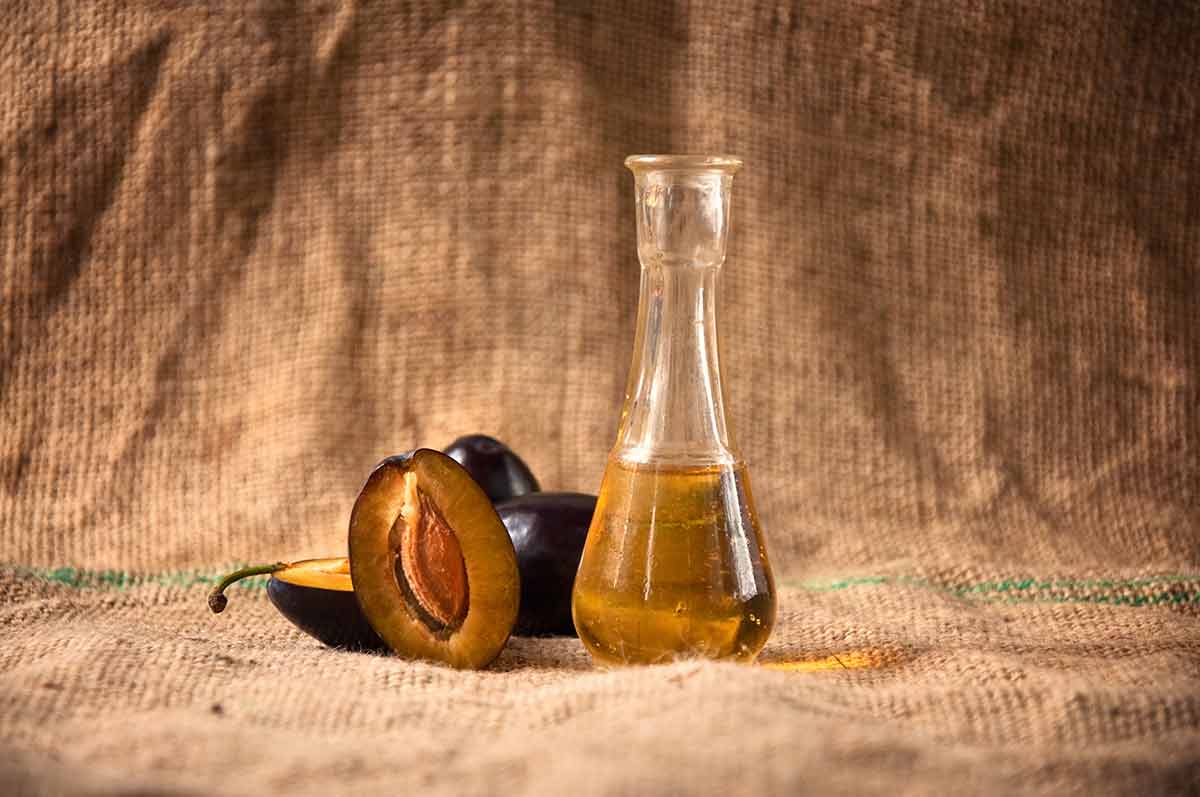
Schnapps is a popular traditional German alcoholic drink made from fermented fruit.
Schnapps can come in various forms, flavours and tastes. Butterscotch and peach schnapps are two of the most popular.
Enjoyable on its own or as part of a cocktail, schnapps was originally intended as a medicinal drink that quickly became one of Europe’s favourite winter beverages.
When visiting Germany, one of the fun things to do in is join a cocktail class.
5- Asbach Uralt
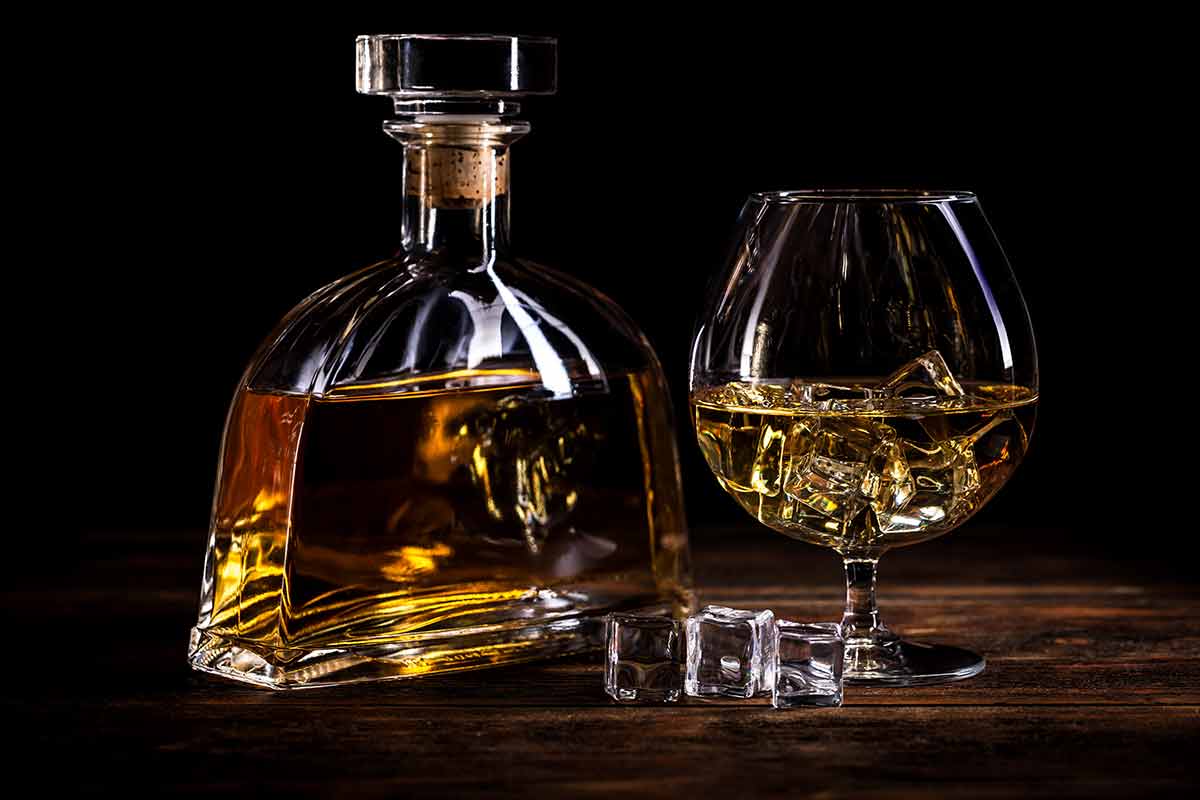
Asbach Uralt is a German brandy created in Cologne by Hugo Asbach in 1892.
Asbach started his brandy distilling career after learning the craft in France, creating what is today known as ‘Weinbrand’ (wine brandy).
Traditional Asbach Uralt is an amber-coloured brandy with faint tastes of honey, coffee and vanilla, as well as a sweet peppery overtone that makes Asbach Uralt stand out from other German liqueurs.
Best served on ice, Asbach Uralt comes in various flavours and styles, including an aged version, and can be enjoyed across Germany.
For more about Germany, read:
- 20 German Shows On Netflix
- 22 Famous Landmarks in Germany
- 15 Magic Things To Do In Munich
- 25 Facts About Germany
- 20 Castles In Germany
- 10 Bavarian Castles
- 20 Drinks In Germany
- Best Time To Visit Germany
- Berlin Nightlife
- Munich Nightlife
- 20 German Cities
- 20 Things To Do In Stuttgart
- 20 Things To Do In Cologne
- 20 Things To Do In Dusseldorf
- Where To Stay In Berlin
- 20 Types of Food in Germany To Taste
- 15 Famous Things Germany is Known For
- 20 Things To Do In Dresden
- 20 Things To Do In Frankfurt
- 20 Things To Do In Leipzig
- 20 Things To Do In Bonn
- 20 Things To Do In Bremen
- 20 Things To Do In Potsdam
- 20 Things To Do In Regensburg
German Beers
6- Kölsch
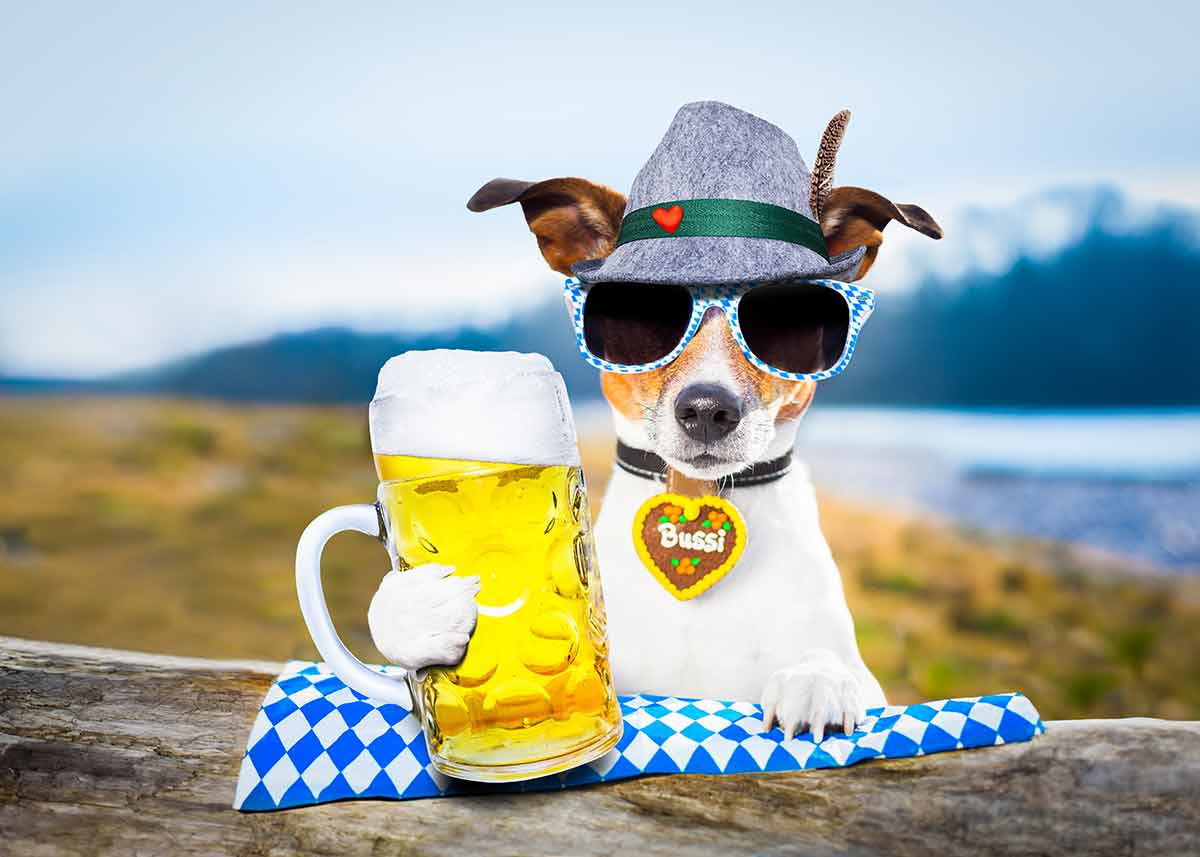
Brewed only in Cologne, Kölsch beer is a highly fermented, pale yellow, fully-rounded ale beer that can be traced back to the early 1600s.
You can tour the brewery in Cologne to learn about their brewing culture and taste three Kolsch beers during the tour.
Traditionally served in a Stange glass, Kölsch beer must adhere to the German Beer Purity Law of 1516 and the Kölsch Convention of 1986 for it to be classified as Kölsch.
Kölsch beer has fruity undertones while remaining crisp and easy to drink, much like a pale lager.
Perfect for warm weather, drinking a glass of Kölsch in Cologne is a must-do for anyone looking to sample some of the best beer in the world.
7- Weißbier/Weissbier
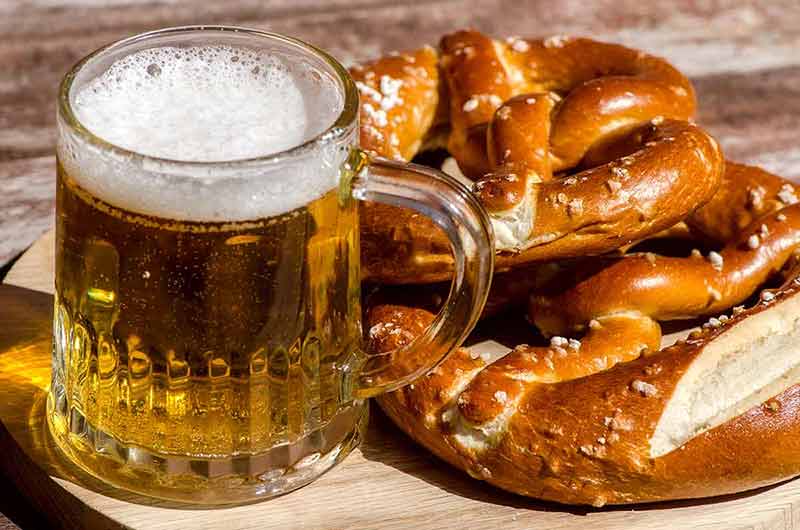
Bavarian Weißbier, which means wheat beer in German, is a top-fermented light-coloured beer that must be made with at least a 50% wheat-to-barley ratio according to German law.
Weißbier’s top-fermented yeast gives the beer a unique undertone of banana and clove, making the beer’s taste stand out from other more-traditional German beers.
Weißbier can come in various forms, however, the two most popular variations are the stronger Weizenstarkbier and the dark Dunkelweizen.
Weizenstarkbier contains significantly more alcohol than the toasted-malt Dunkelweizen.
8- Helles
Created in 1894, Helles is Bavaria’s take on the popular light Czech pilsner.
Traditional Bavarian beers were strong and dark roasted lagers, however, the rising popularity of lighter pilsners across the Czech border prompted local German breweries to experiment with a pilsner of their own.
Authentic Bavarian Helles are commonly firmer bodied and more malt-forward than typical Czech pilsners while still staying smooth and refined.
Easy to drink and found all across Germany, Helles beer is an excellent alcoholic beverage to consume on your travels through this beautiful country.
9- German Lager
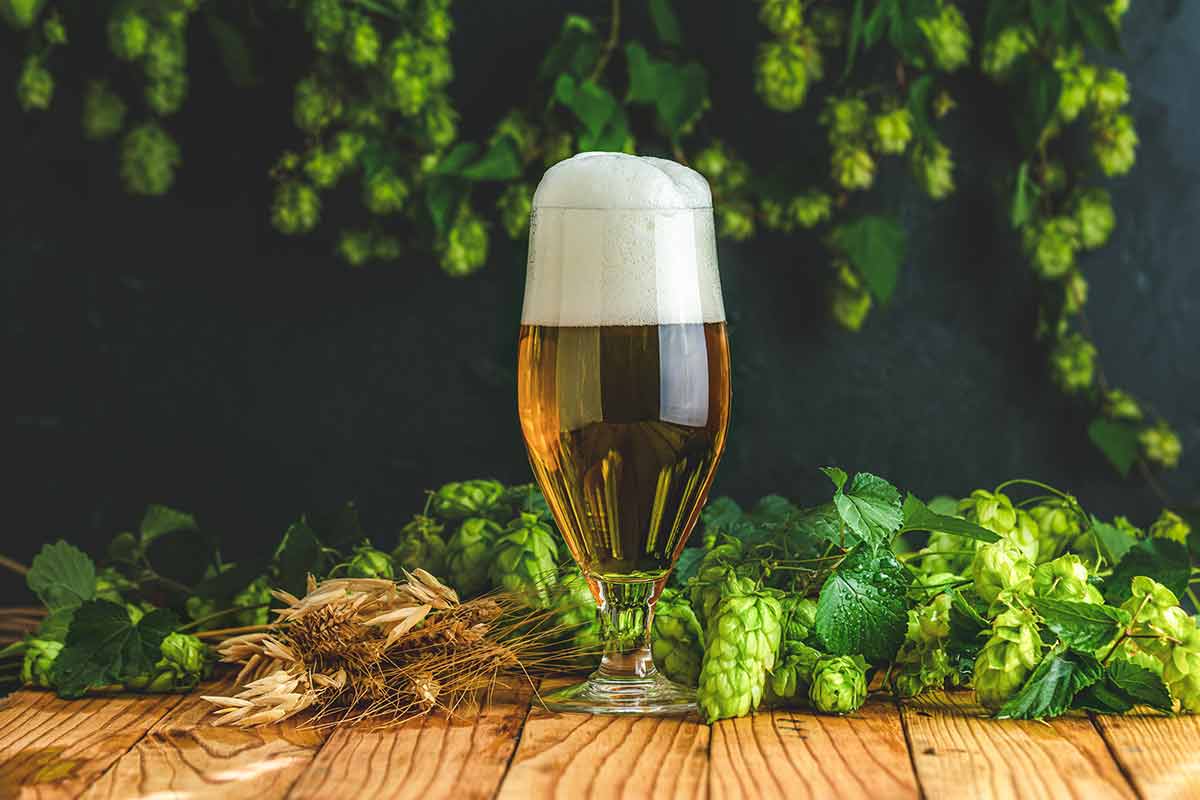
Lager and ale are two popular beer varieties globally and nobody produces lagers like the Germans do.
Although lagers are made all over the world, it was in Germany where this popular beer variety started.
The term ‘lager’ in German means ‘to store’ and brewers in Bavaria stored the beer in cold beer cellars after an initial fermentation and second ‘lagering’ period.
Before refrigeration was invented, some brewers used the icy caves of the Bavarian Alps to store their beer in summer.
German lager usually comes in three forms: pale, amber or dark.
Pale lagers are the most common type of lager you’ll find not only in Germany but worldwide, with the first batch of pale lagers produced in Munich by Gabriel Sedlmayr around the mid-19th century.
The first lagers produced were most likely dark lagers, or ‘Dunkel’ lagers as they’re known in Germany, with dark lagers still extremely popular all across Bavaria today.
If you’re visiting Germany, you may like these tours:
German Non-Alcoholic Drinks
10- Kinderpunsch
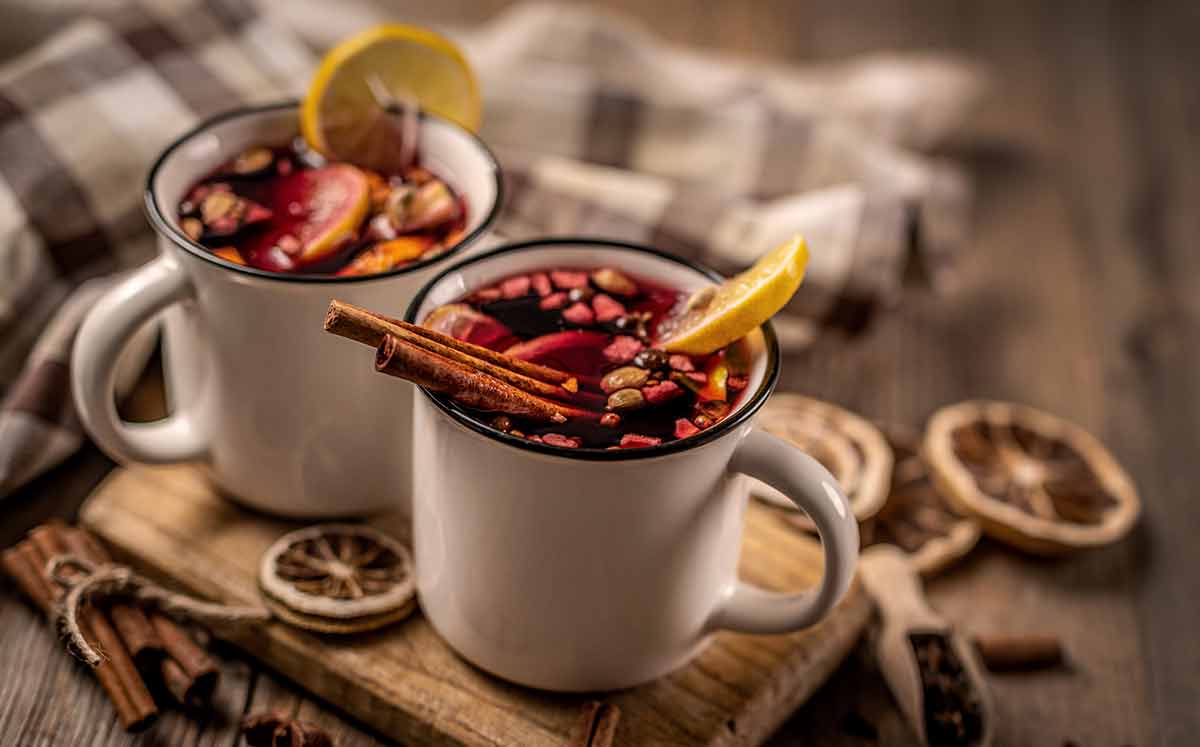
As the name suggests, Kinderpunsch is an alcohol-free punch usually served around festive periods such as Christmas.
It’s the alcohol-free version of the popular German drink Glühwein.
Sold all across Germany in grocery stores, bars and cafés, traditional Kinderpunsch consists of juice (often cherry and orange) mixed with tea and spiced with cinnamon, clove and other spices.
The ingredients are slowly heated to allow the different components to blend.
Despite not containing a drop of alcohol, this tasty and seemingly plain drink is pleasant to enjoy during the cold German winter.
11- Eiskaffee
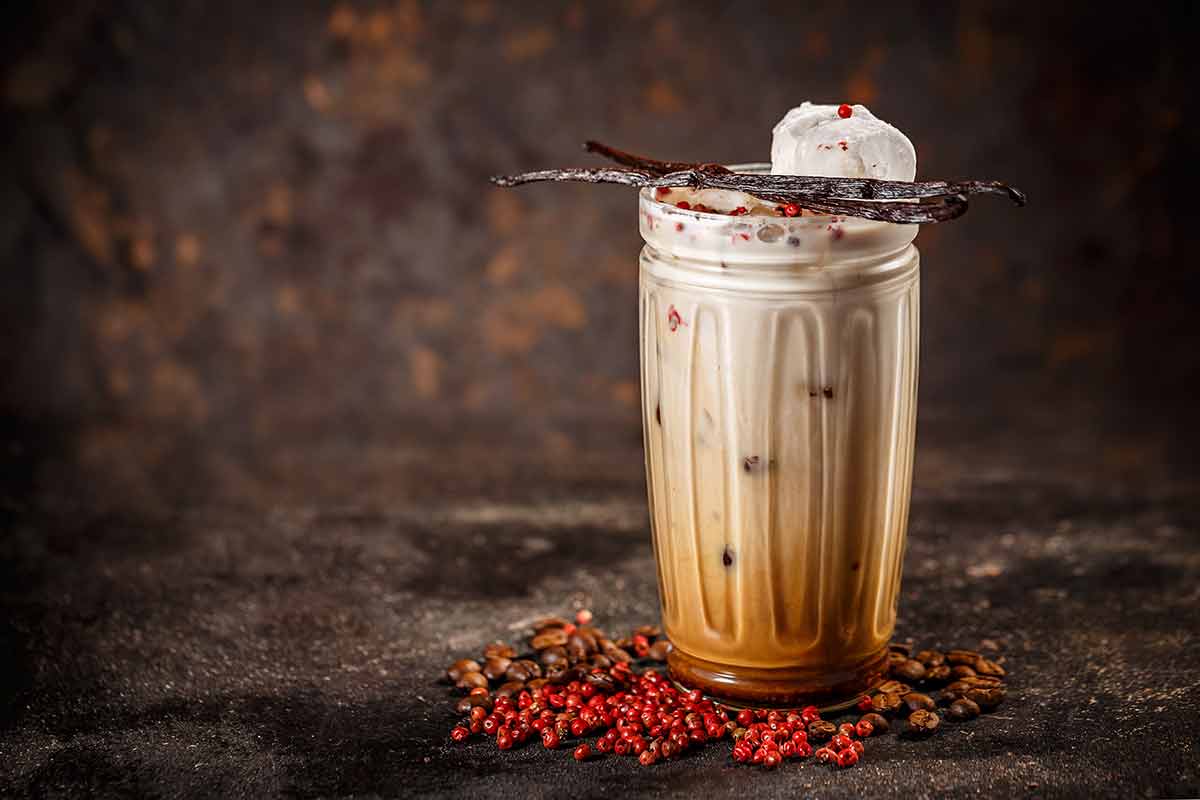
An Eiskaffee, or an ice cream coffee, is a deliciously decadent drink to enjoy on a warm summer’s day while you’re out and about.
Usually made with coffee and a scoop of whipped cream and vanilla ice cream, Eiskaffees are great for washing down traditional German kuchen.
Though not as sweet as one would expect, an Eiskaffee can be spiced up by adding a shot of rum to make it a delicious alcoholic dessert beverage.
Eiskafee is traditionally served in a tall glass, just like a regular milkshake.
12- Apfelschorle
An Apfelschorle is a refreshing non-alcoholic beverage that consists of apple juice mixed with sparkling water to create a fizzy concoction.
Easy to make at home and even easier to drink, Apfelschorle contains about half the calories a glass of juice would contain, making it a healthy alternative.
If you’d like to try Apfelschorle without travelling to Germany, mix one-part apple juice with one part sparkling water or soda water and you’ll have a refreshing German staple.
German Cocktails
13- Hugo
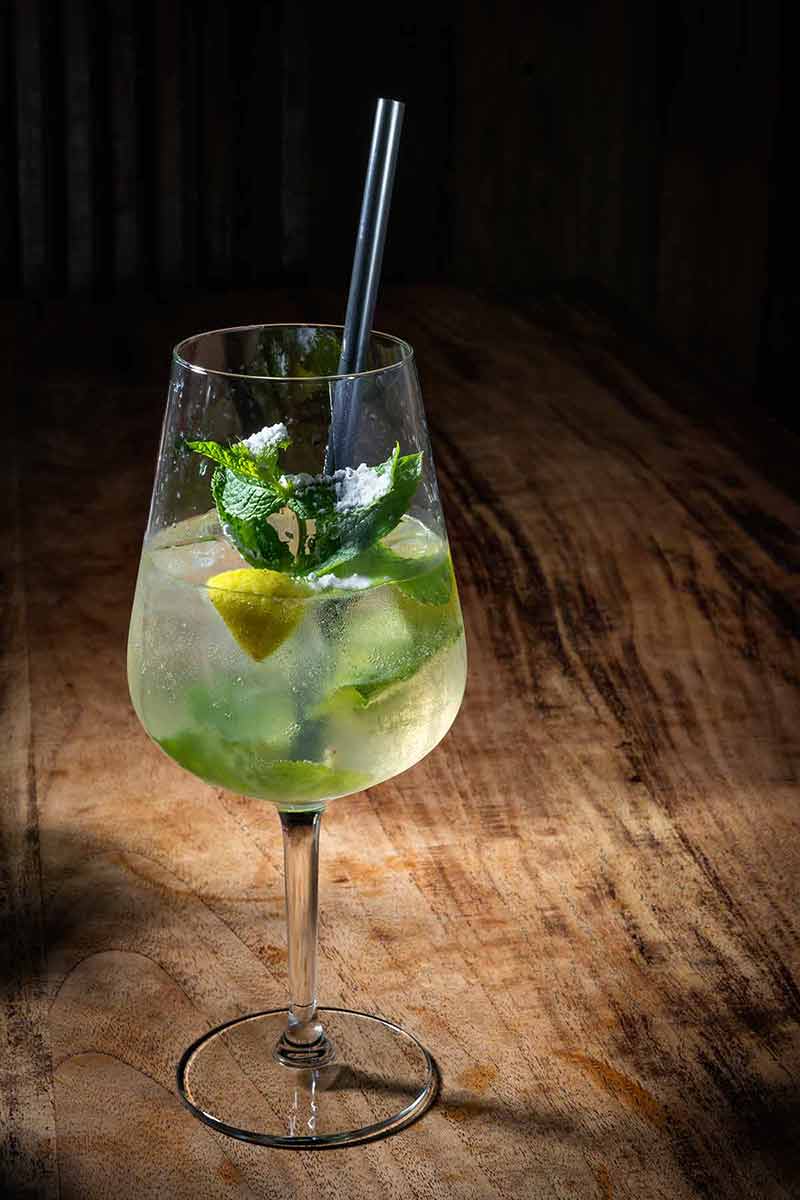
This light and refreshing cocktail has become popular all across Germany, Austria, Switzerland and Italy, dating only to 2005.
The Hugo is the perfect blend of floral sweetness with a relatively low amount of alcohol to create an inviting cocktail you can enjoy throughout the year.
Bartender Roland Gruber made the original Hugo from lemon balm, but the recipe has since been adapted to replace lemon balm with elderflower syrup for extra sweetness.
Made from sparkling wine, elderflower syrup and club soda, with a touch of mint on top to round the drink off, the Hugo is an excellent aperitif that’s best served before a meal.
Initially created as an alternative to the famous Italian cocktail, the Aperol Spritz, the Hugo has quickly become a popular cocktail across Europe in its own right.
14- Radler
The Radler is a popular German cocktail that puts a unique spin on Germany’s favourite drink, beer.
Made from combining authentic German beer and lemonade, legend has it that the Radler was born in a bar in Deisenhofen to keep the bar from running out of beer during a cycling event.
Whether this story is true or not, it became the inspiration for the cocktail’s name (Radler means cyclist in German) and why the drink became so popular across Germany.
Though You can find varieties of the Radler all across the world but an authentic Radler made from genuine German beer is like nothing else you’ve ever tasted.
15- Eierlikör
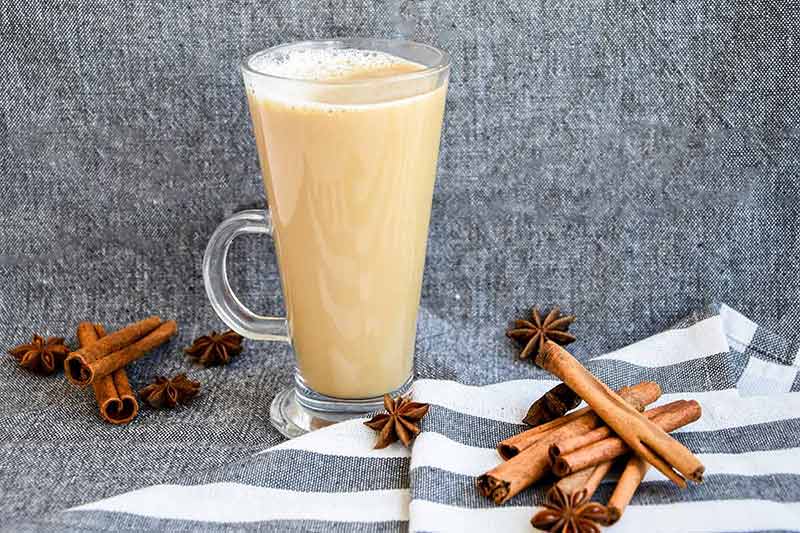
A flavourful and more alcoholic version of the traditional eggnog, Germany’s Eierlikör drink is a rich and creamy delight that is bliss in a cup during wintertime.
Usually made from egg yolk, sugar, vanilla extract, rum and whipped cream, an Eierlikör’s flavour and taste mainly comes from the eggs and rum, whereas the eggnog’s flavour primarily comes from its dairy content and its spices.
While not everyone’s cup of tea, Eierlikör, or egg liqueur, is extremely popular across Germany and the Netherlands, with some brands exporting this unique liqueur to the United States and Canada.
Commonly served warm in a glass, a serving of Eierlikör is perfect for keeping you toasty during those freezing German winters.
16- Holler Spritz
The traditional Holler Spritz cocktail is an elderberry-infused lemon juice, sparkling water and white wine blended cocktail that is refreshing.
While it’s not the first or the only Spritz cocktail (the first Spritz was created in Italy during the 1800s), the Holler Spritz is an iconic German staple best enjoyed during a warm summer’s evening.
This sparkling sensation is easily one of Germany’s best cocktails and worth a try if you want to enjoy a German drink that isn’t beer-based.
German Wine
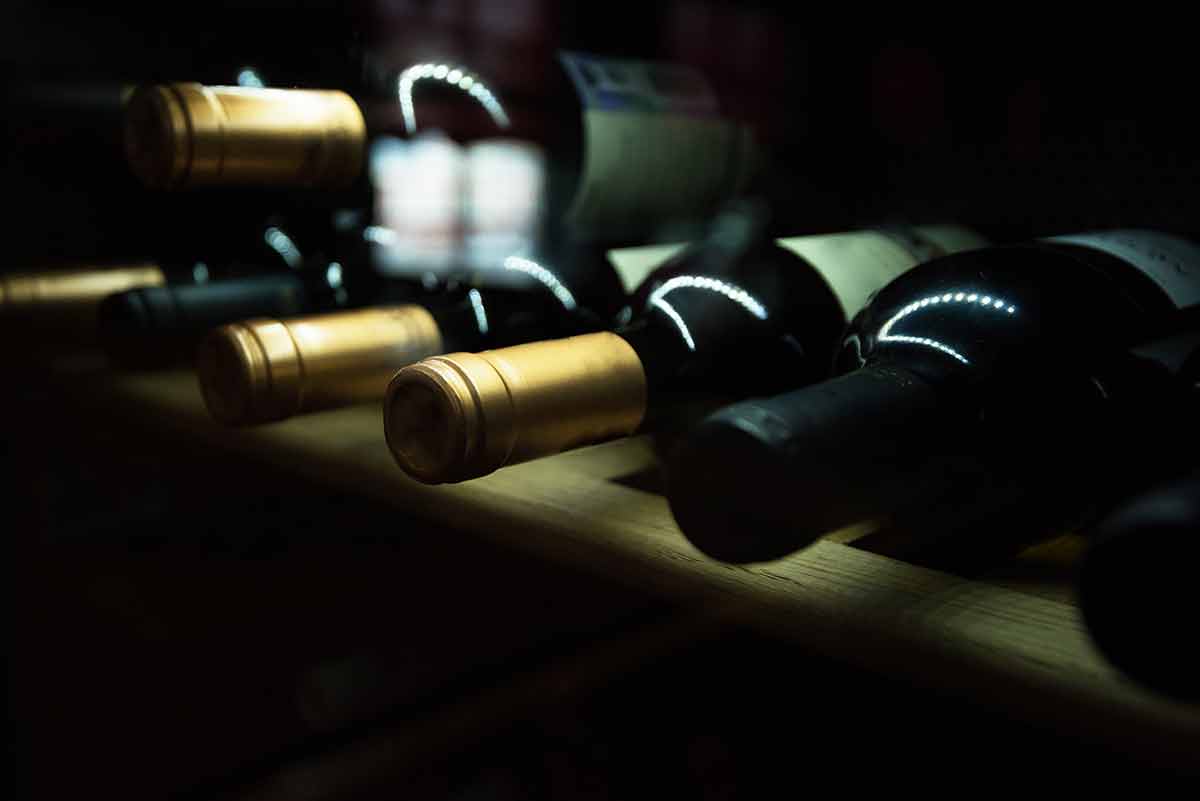
17- Riesling
Riesling is a refreshing aromatic wine native to regions in Germany bordering the Rhine River and is known for its crisp flavours of apple, apricot, pear and peach, as well as a higher level of acidity than regular white wines.
One of very few wines around the world bottled in its own unique bottle shape, spotting an authentic Riesling in the store is easy.
Look out for a tall, elegant-looking slender bottle.
First mentioned as far back as 1435, Riesling has been the wine of choice for German nobility and esteemed citizens for centuries and can be found in restaurants and shops worldwide.
18- Apfelwein
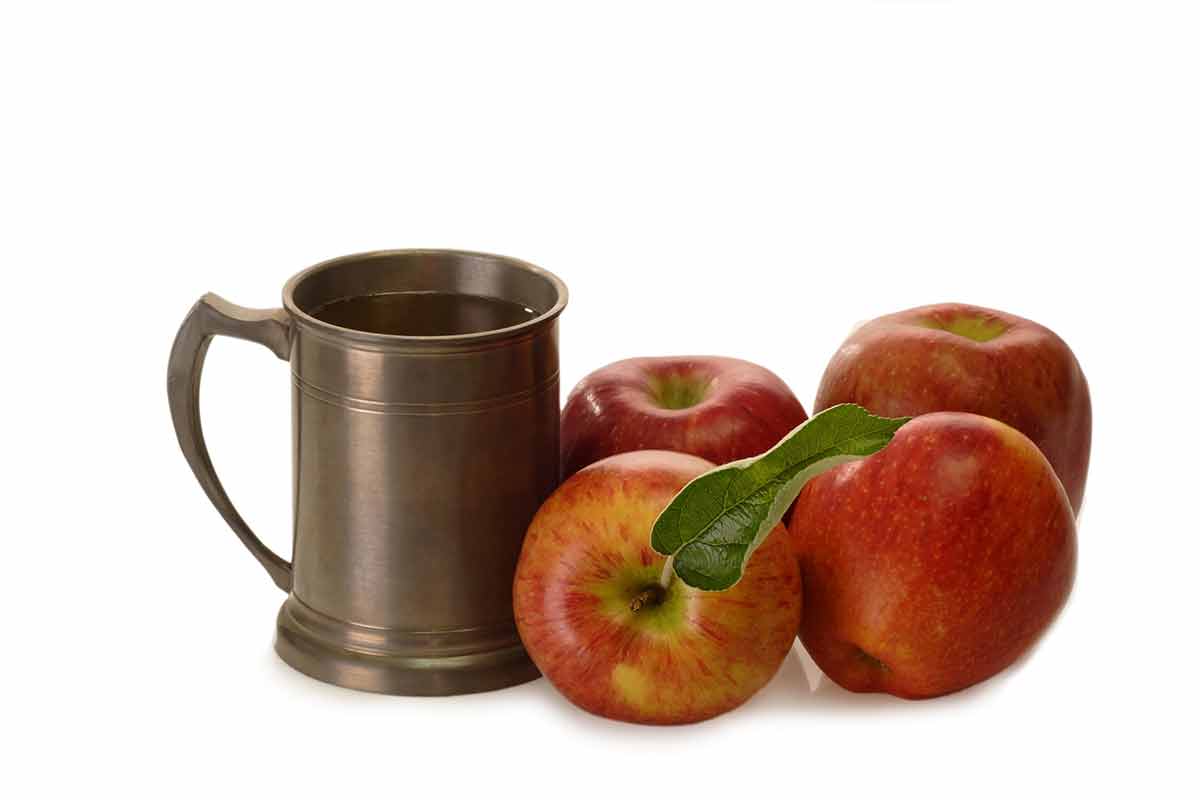
Apfelwein is a German wine made from apples instead of grapes, and although is shares similarities with traditional cider, Apfelwein is not a cider.
Where cider is a sparkling sugary drink, Apfelwein is not.
The gas is allowed to escape during fermentation, and older, more bitter apples are used to make Apfelwein.
Apfelwein is tarter than standard cider, however, there is a variation of Apfelwein, known as Süßgespritzter, which is a mixture of lemonade and Apfelwein that more closely resembles the traditional cider most people are used to.
Apfelwein is the traditional drink in Southern Germany’s Hessen Rhein-Main winemaking region, where over 100 types of apples are grown.
19- Glühwein
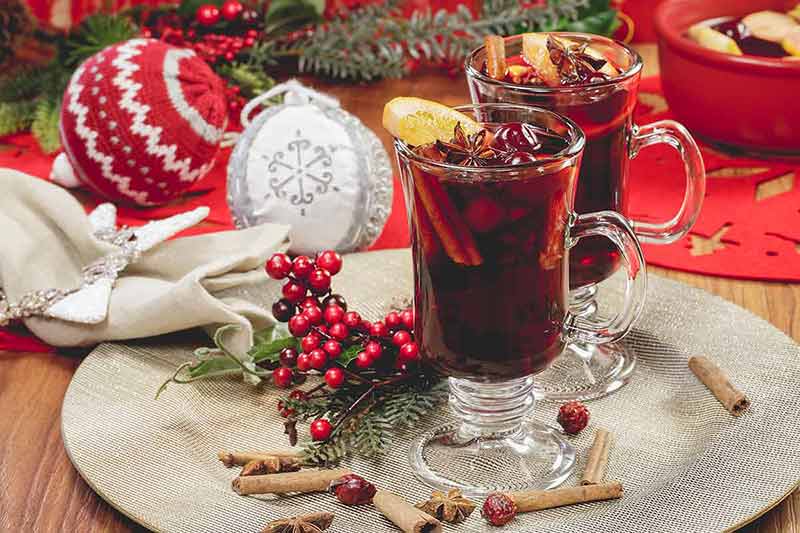
Glühwein, although not a traditional wine you’d expect to buy in an upscale restaurant or marketplace, is a mulled wine that’s one of Germany’s most beloved beverages around wintertime.
Glühwein consists of warm red wine mixed with spices such as cinnamon, cloves, anise and sugar and topped off with a peel of an orange to create a delicious warm wine cocktail.
Some regions in Germany are known to make Glühwein from white wine instead of the traditional red wine, and many Germans add a shot of Schnaps or rum to give their Glühwein an extra kick.
There’s really no better drink to sip whilst spending time with friends and family around a fire during wintertime.
20- Spätburgunder
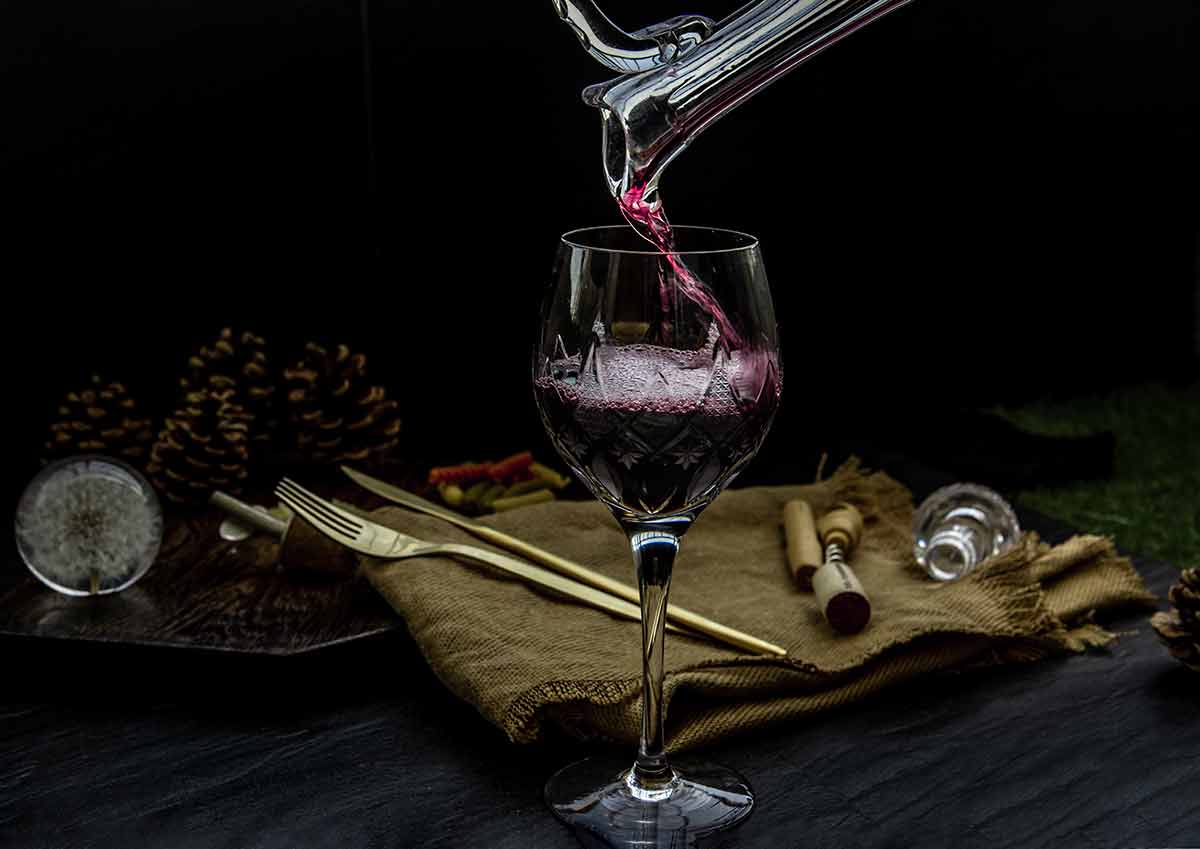
Spätburgunder is the German name for the Pinot Noir grape variety, with Germany being the world’s third-largest Pinot Noir producer.
Given Germany’s colder climate, Spätburgunder wines are lighter in colour, acidity and body than Pinot Noirs produced in warmer climates.
First documented in the 1300s, Germany’s Spätburgunder wines now compete with the world’s best Pinot Noirs and are worth a try whenever you’re touring through Germany.
For more drinks around the world read:
- 20 Italian Cocktails and Other Drinks
- 20 Japanese Cocktails and Other Drinks
- 21 Spanish Cocktails and Other Drinks
- 25 American Drinks and Cocktails
- 20 Greek Drinks and Cocktails
- 20 German Drinks and Cocktails
- 20 Turkish Drinks and Cocktails
- 20 Polish Drinks and Cocktails
- 20 Jamaican Drinks and Cocktails
- 20 Mexican Drinks and Cocktails
- 20 Indian Drinks
- 20 Thai Drinks and Cocktails
- 20 French Drinks and Cocktails
Plan Your Trip

Rent A Car – Find the best car rental rates at Discover Cars. They compare car hire companies to provide you with the best deal right now.

Find A Hotel – If you’re curious about this article and are looking for somewhere to stay, take a look at these amazing hotels.

